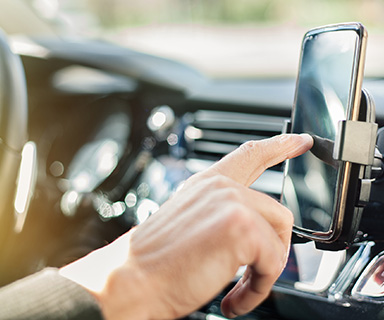- March 22, 2019
- Intent Data
How Real Intent Data Provides a True “Lyft” for B2B Marketers
 Ridesharing apps like UberTM and LyftTM have been a revelation for both riders and drivers. For riders, tap a button and get a ride. For drivers, it’s a source of behavioral intent data—a real-time window into the active demand in the market.
Ridesharing apps like UberTM and LyftTM have been a revelation for both riders and drivers. For riders, tap a button and get a ride. For drivers, it’s a source of behavioral intent data—a real-time window into the active demand in the market.
These apps should be an encouraging story for B2B tech marketers and salespeople. New sources of behavioral data are available that enable B2B vendors to find active buyers and help them “get where they’re going” more efficiently.
From “rider alerts” to “deal alerts”
From the driver’s point of view, these services reveal who needs a ride, what journey they need to make, and when they want to go. Imagine if B2B sales and marketing had an app that revealed who was researching solutions like yours, what their interests and pain points were, and when they were in market!
In fact, real purchase intent data does exactly that. It reveals the active accounts and named opt-in prospects and the entire buying team researching your solutions. It tells you what journey they need to make: starting from where they are (current tech install, pain points) and where they’re going (what they’re trying to achieve, vendor interests). It also alerts you to when a deal is happening based on the intensity (recency and velocity) of intent signals.
Life before ride sharing
Before ridesharing apps , cab drivers would patiently wait for business at taxi stands or hope to be hailed at random on the street. The first method resembles waiting patiently for inbound leads. The second method is similar to “spray and pray” tactics that favor volume over precision. Both methods are a waste of time and fuel for the driver.
The problem with waiting for inbound is that the world’s a big place and most people haven’t heard of you. According to Google, B2B researchers do 12 searches prior to engaging on a specific brand’s site. To make matters worse, there’s a lot of tough competition. Many companies offer similar products, just like the long line of cabs at the station.
The problem with the “spray and pray” approach is that it’s wasteful. Sales reps end up wasting time and energy on companies that are not a good fit for your solutions. Even when they do hit the right companies, it might be at the wrong time. This is like the cab driver cruising up and down the busy streets but unable to pick up a ride (when perhaps a few blocks away, someone does need a ride).
Getting more business with behavioral data
By leveraging behavioral data and matching riders to drivers, these companies enable more efficient use of the roads and vacant seats in cars. This gain in efficiency—thanks to real-time traffic data—helps the rider get where they want to go quicker and cheaper while the driver gets business they wouldn’t otherwise be able to access. Just as Uber and Lyft have made travel more efficient with behavioral data, sources of third-party data that provide account-level insight can make your B2B marketing and sales efforts more efficient.
To find out more about how intent data helps you find the accounts that matter and the contacts that convert, click here.
b2b purchase intent insight, behavioral data, marketing intelligence, purchase intent data, purchase intent insight



